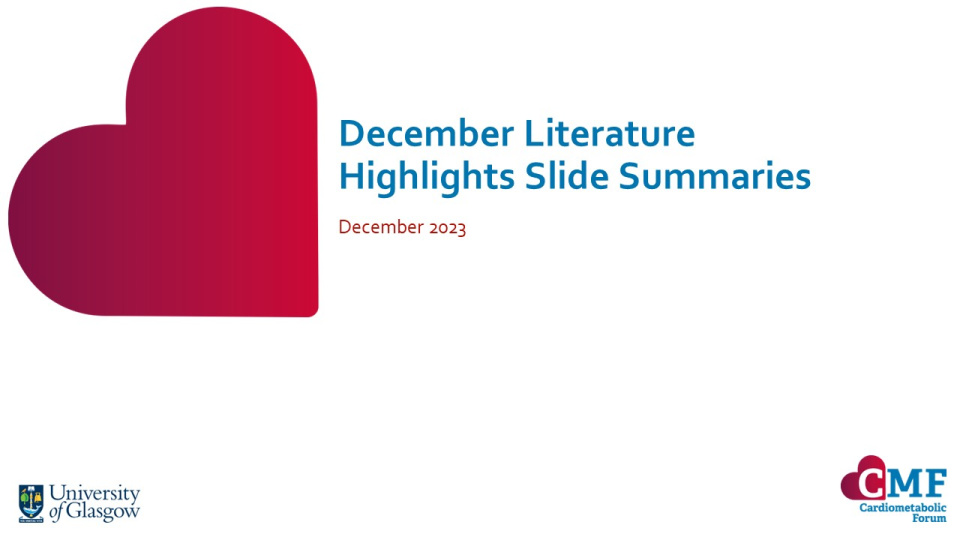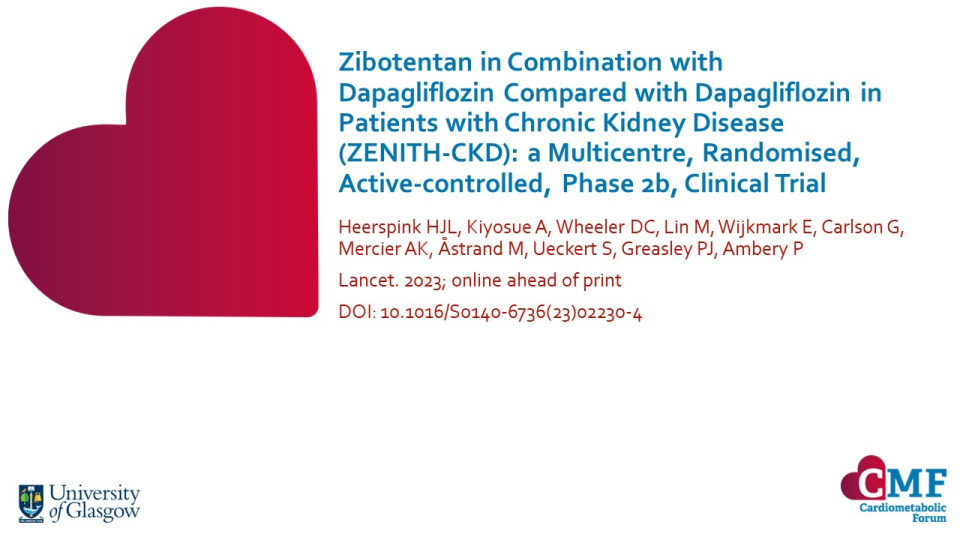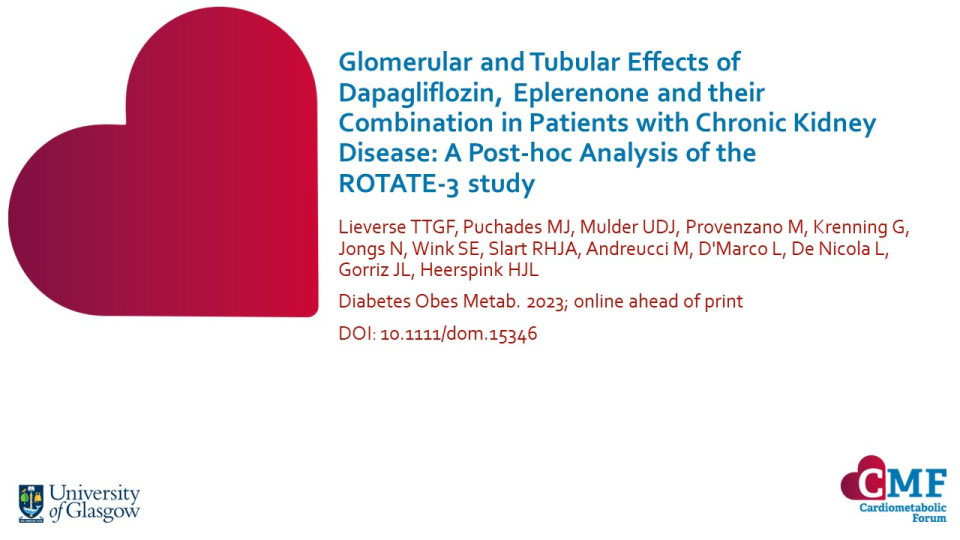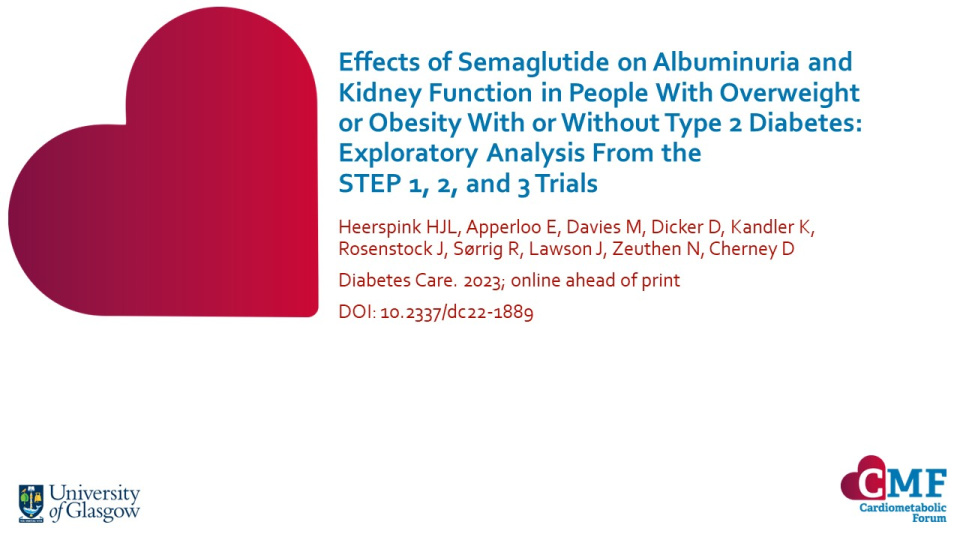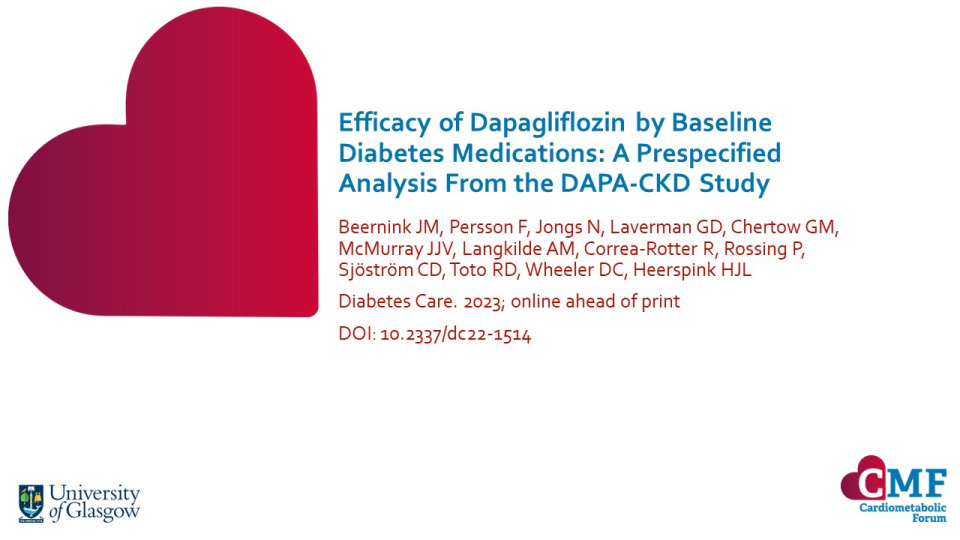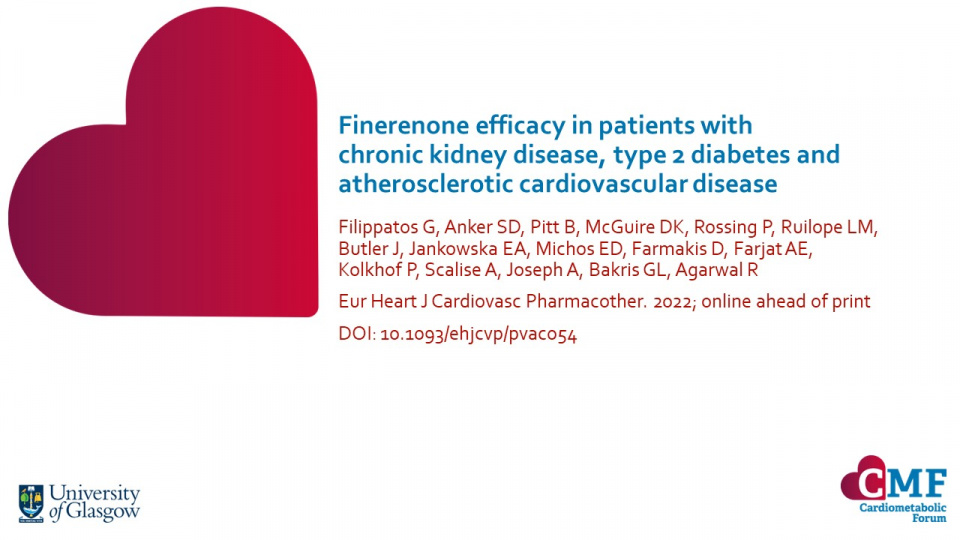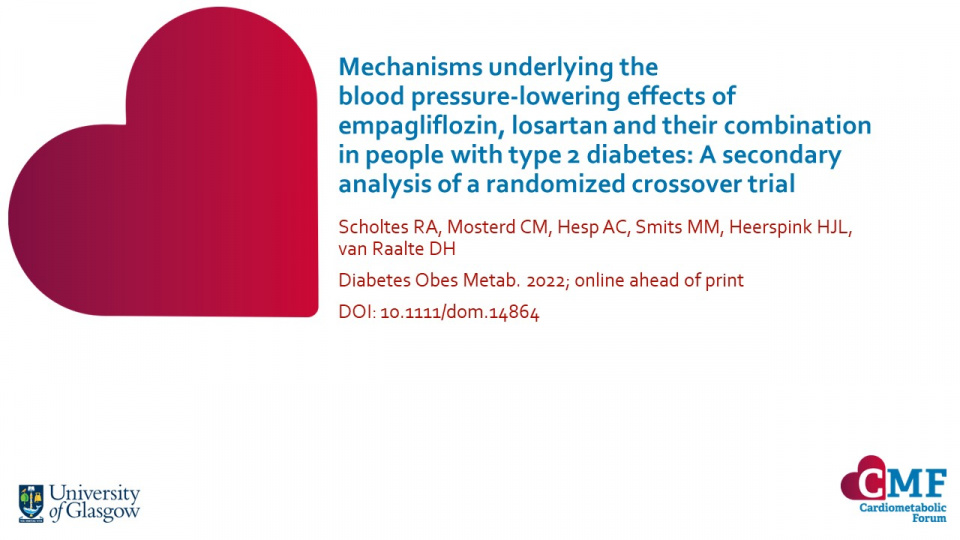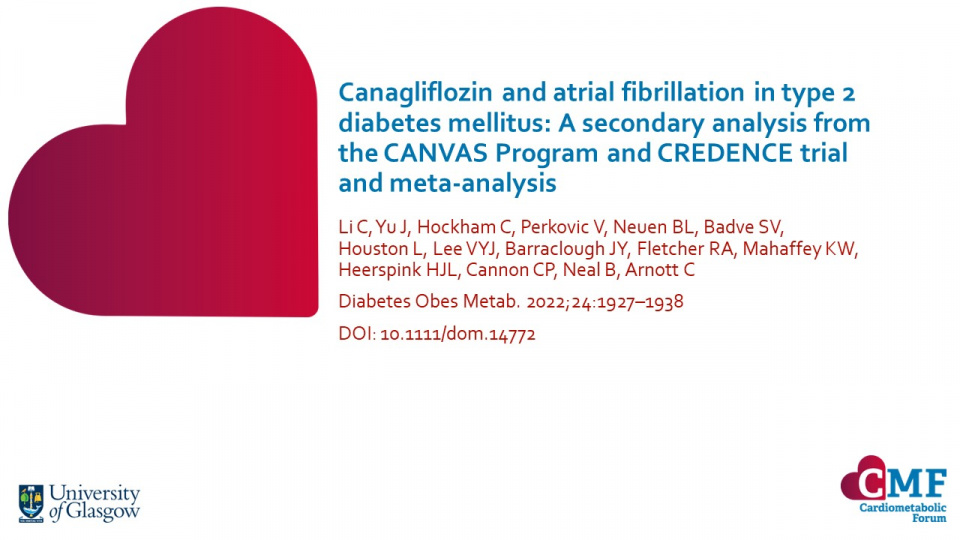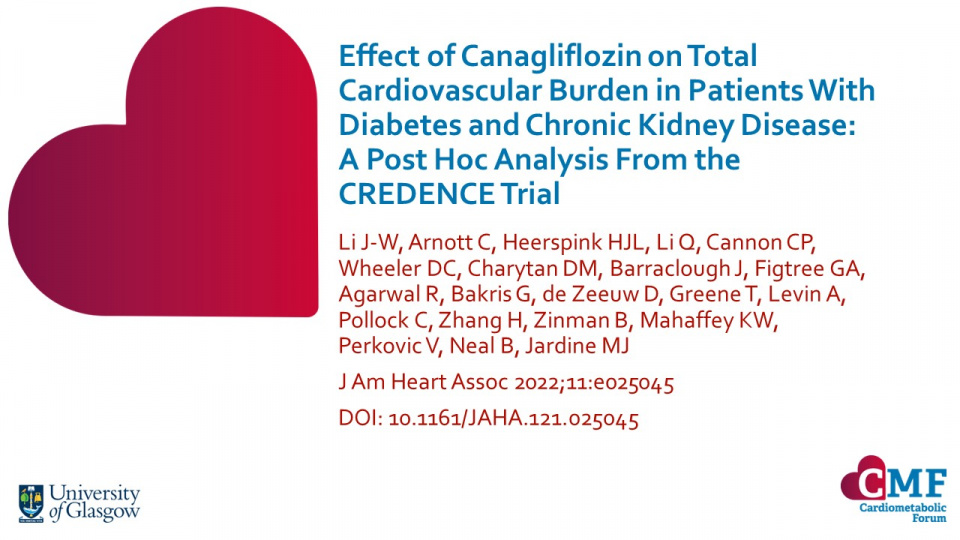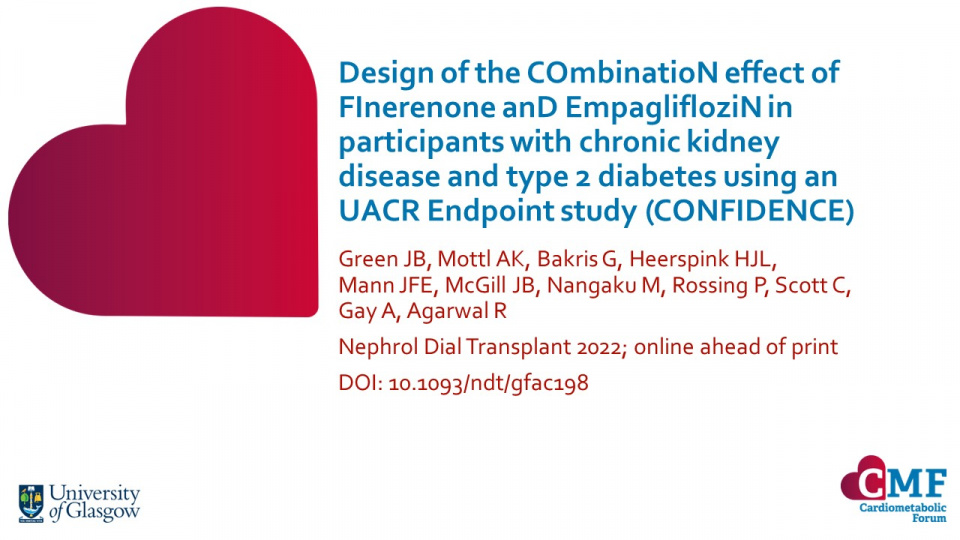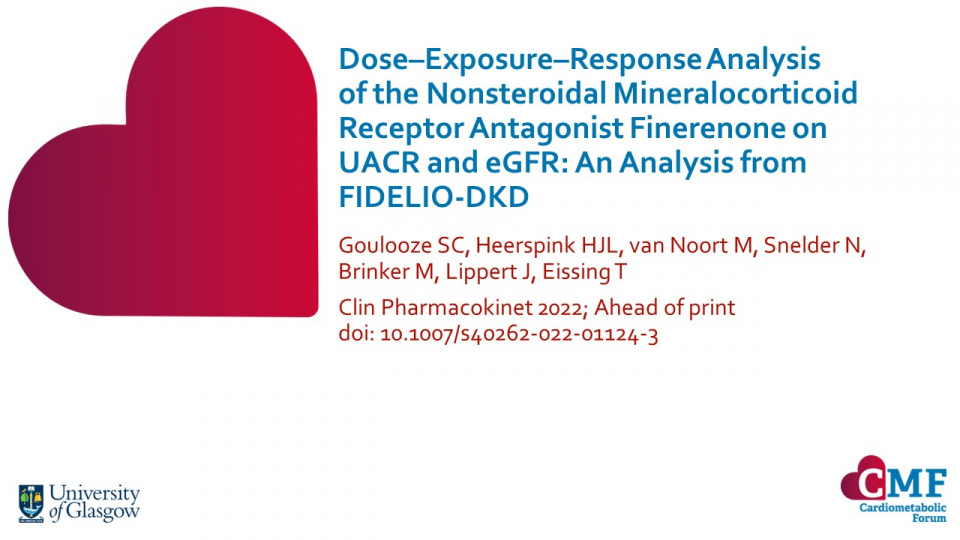Publications
Stay up to date with our literature reviews which are curated by experts to feature the most important publications released each month. Explore our publications for access to concise summary slides for your own use.
Zibotentan in Combination with Dapagliflozin Compared with Dapagliflozin in Patients with Chronic Kidney Disease (ZENITH-CKD): a Multicentre, Randomised, Active-controlled, Phase 2b, Clinical Trial
Lancet. 2023; online ahead of print DOI: 10.1016/S0140-6736(23)02230-4
The risk of kidney failure persists in many patients with CKD, even when receiving optimal treatment including SGLT2i. Increased expression of endothelin-1 may contribute to CKD progression through several pathophysiological effects; however, high doses of non-selective endothelin receptor antagonists (ERAs) have been linked with fluid retention.
Keywords:
Glomerular and Tubular Effects of Dapagliflozin, Eplerenone and their Combination in Patients with Chronic Kidney Disease: A Post-hoc Analysis of the ROTATE-3 Study
Diabetes Obes Metab. 2023; online ahead of print DOI: 10.1111/dom.15346
The ROTATE-3 cross-over trial in 46 adults with CKD and urinary albumin excretion ≥100 mg/24 h showed that dapagliflozin combined with eplerenone led to robust additive reductions in albuminuria compared with either agent alone. This post-hoc analysis aimed to characterise the effects of dapagliflozin, eplerenone and the combination on markers of glomerular and tubular function to better understand the mechanisms responsible for albuminuria lowering.
Keywords:
Effects of Semaglutide on Albuminuria and Kidney Function in People With Overweight or Obesity With or Without Type 2 Diabetes: Exploratory Analysis From the STEP 1, 2, and 3 Trials
Diabetes Care. 2023; online ahead of print DOI: 10.2337/dc22-1889
In the STEP trials, semaglutide markedly reduced body weight and improved glycaemic control in adults with overweight or obesity with/without T2D. However, the effects of semaglutide on albuminuria and eGFR are unknown.
Efficacy of Dapagliflozin by Baseline Diabetes Medications: A Prespecified Analysis From the DAPA-CKD Study
Diabetes Care. 2023; online ahead of print DOI: 10.2337/dc22-1514
Achieving optimal glucose control can be challenging in patients with T2D and CKD because impaired kidney function hampers the use of several oral or injectable glucose-lowering therapies (GLTs) and increases the likelihood of hypoglycaemia. This prespecified analysis from the DAPA-CKD trial evaluated whether the benefits of dapagliflozin in patients with T2D and CKD varied by background GLT number or class.
Keywords:
Cost-Effectiveness of Dapagliflozin as a Treatment for Chronic Kidney Disease: A Health-Economic Analysis of DAPA-CKD
Clin J Am Soc Nephrol. 2022; online ahead of print DOI: 10.2215/CJN.03790322
Dapagliflozin has been shown to reduce CKD progression and KRT requirement when added to standard therapy in patients with CKD in the DAPA-CKD trial. This analysis was designed to estimate the cost-effectiveness of dapagliflozin for the treatment of CKD from payer perspectives in the UK, Germany and Spain.
Mechanisms underlying the blood pressure-lowering effects of empagliflozin, losartan and their combination in people with type 2 diabetes: A secondary analysis of a randomized crossover trial
Diabetes Obes Metab. 2022; online ahead of print DOI: 10.1111/dom.14864
This prespecified analysis of the RECOLAR study investigated the effects of the sodium-glucose co-transporter-2 inhibitor (SGLT2i), empagliflozin, the angiotensin receptor blocker (ARB), losartan, and their combination on blood-pressure lowering, while studying the mechanisms potentially involved.
Canagliflozin and atrial fibrillation in type 2 diabetes mellitus: A secondary analysis from the CANVAS Program and CREDENCE trial and meta-analysis
Diabetes Obes Metab. 2022;24:1927–1938 DOI: 10.1111/dom.14772
A pooled analysis from the CANVAS Program and CREDENCE trial found that canagliflozin did not have a significant effect on the incidence of atrial fibrillation/atrial flutter (AF/AFL) in patients with type 2 diabetes and high risk of cardiovascular disease or chronic kidney disease.
Effect of Canagliflozin on Total Cardiovascular Burden in Patients With Diabetes and Chronic Kidney Disease: A Post Hoc Analysis From the CREDENCE Trial
J Am Heart Assoc 2022;11:e025045 DOI: 10.1161/JAHA.121.025045
Cardiovascular disease is highly prevalent, and represents a major burden in patients with both T2D and CKD. In the CREDENCE trial, canagliflozin reduced the risk of first composite cardiovascular events; this post hoc analysis evaluated the effect on total (first and recurrent) events. During the trial, a total of 883 cardiovascular events occurred in 634 patients; 72% were first and 28% were subsequent events. Analysis showed canagliflozin reduced first and total cardiovascular events by 26% and 29%, respectively, with consistent results across patient subgroups and by baseline cardiovascular history.
These findings provide further support for the benefit of continuing canagliflozin therapy after an initial event to prevent recurrent CV events.
Design of the COmbinatioN effect of FInerenone anD EmpaglifloziN in participants with chronic kidney disease and type 2 diabetes using an UACR Endpoint study (CONFIDENCE)
Nephrol Dial Transplant 2022 Jun 14;gfac198. Online ahead of print. doi: 10.1093/ndt/gfac198.
CONFIDENCE is a new trial currently recruiting. The aim is to demonstrate that 6 months’ dual therapy with finerenone and empagliflozin is superior for reducing albuminuria versus either agent alone.
Despite available interventions, people with T2D remain at risk of chronic kidney disease, which puts them at further risk of kidney failure, CV morbidity, and all-cause mortality. There is therefore a need to slow or attenuate the progression of chronic kidney disease (CKD) and reduce CV morbidity and mortality in this population.
Finerenone and sodium-glucose cotransporter-2 inhibitors (SGLT2i) can both reduce kidney and CV risks, acting via both shared and distinct pathophysiological pathways. Results from post hoc subgroup analyses and a preclinical model suggest dual therapy may provide additive renoprotective effects than using either class alone.
Dose–Exposure–Response Analysis of the Nonsteroidal Mineralocorticoid Receptor Antagonist Finerenone on UACR and eGFR: An Analysis from FIDELIO‑DKD
Clin Pharmacokinet 2022; Ahead of print doi: 10.1007/s40262-022-01124-3
The results of this model-based analysis quantified the dose–exposure–response relationship for urine albumin-to-creatinine ratio (UACR) and estimated glomerular filtration rate (eGFR). Overall, the relationship between finerenone exposure and UACR and eGFR effects was not modified by sodium-glucose co-transporter-2 inhibitor (SGLT2i) use and demonstrated independent and additive effects.

